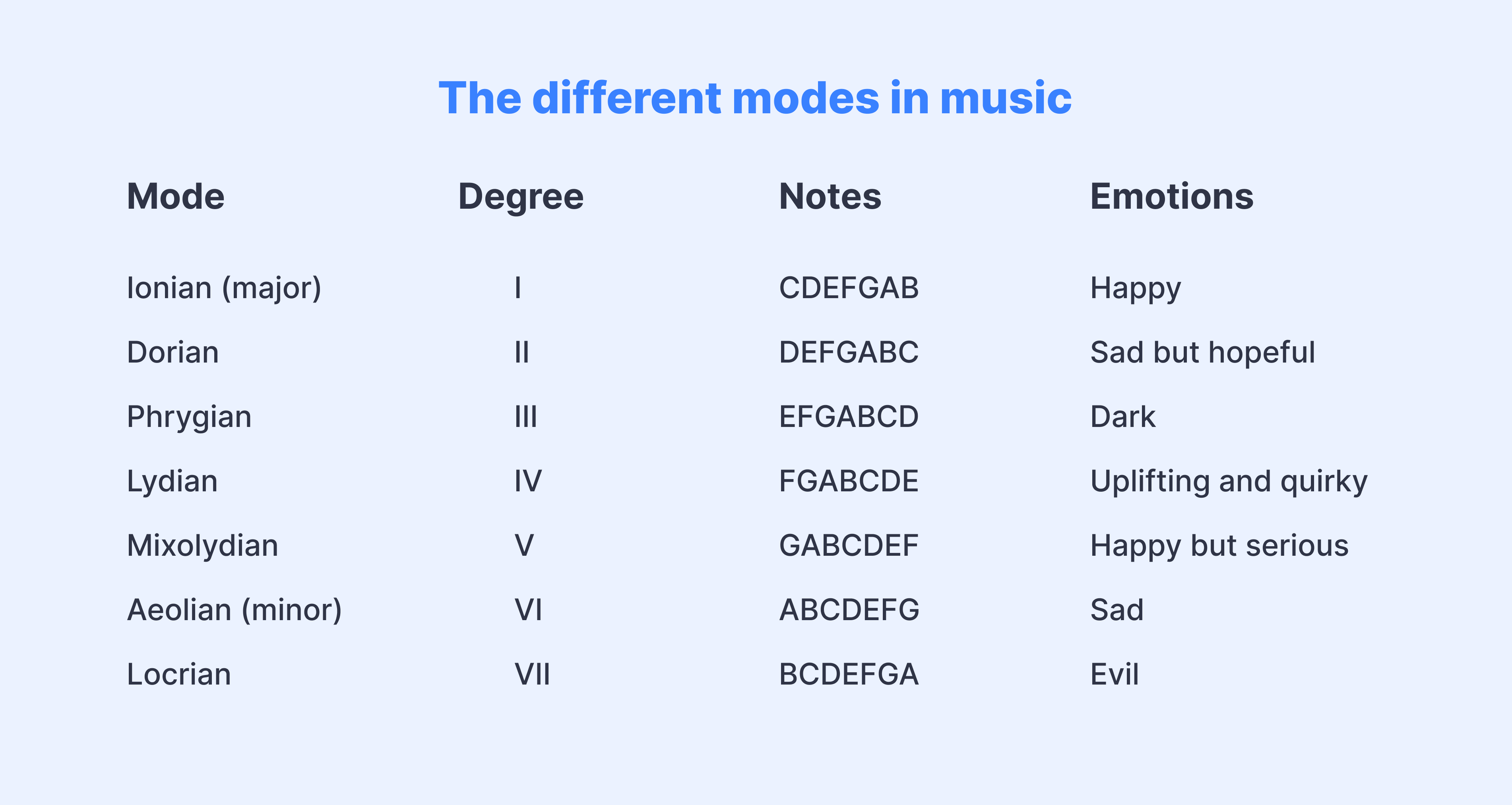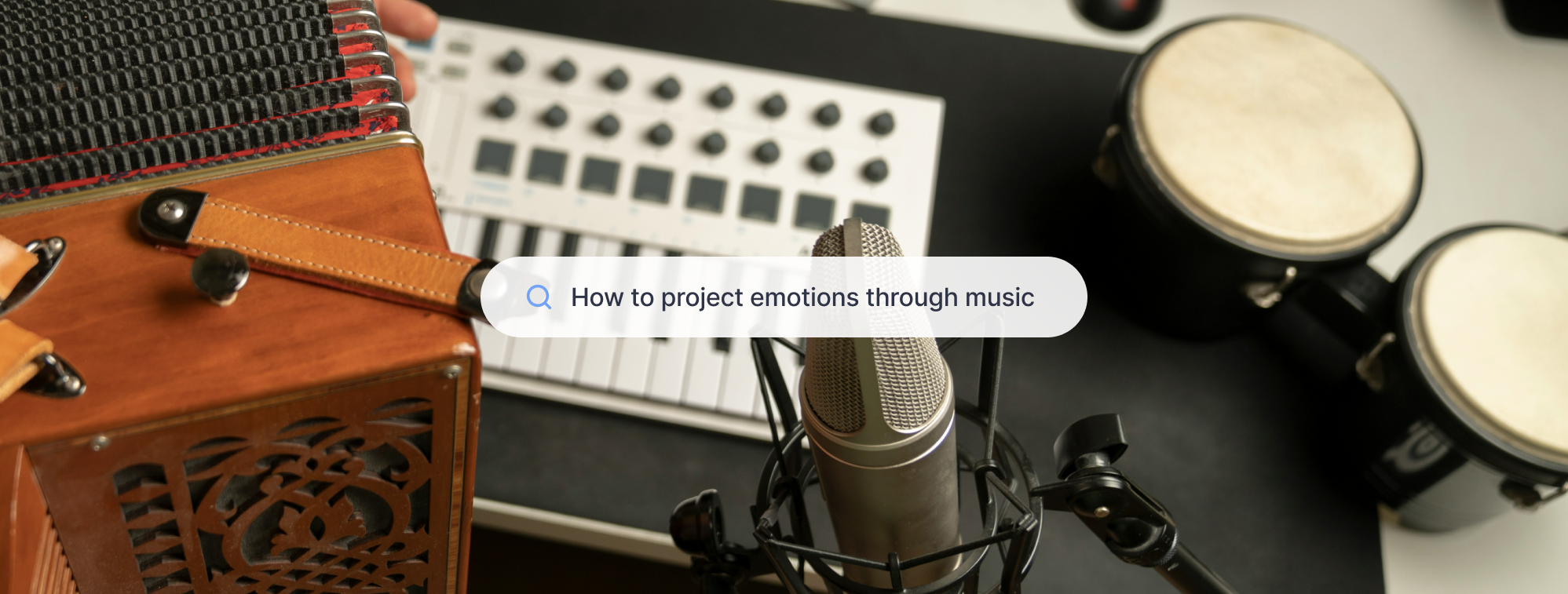Hello everyone,
I hope you're all doing well. Thank you for the positive response to my previous article, "Music, a catalyst for our emotions." It's truly heartwarming to see your enthusiasm and interest in exploring the profound connection between music and our emotional experiences. And if you haven't had a chance to read it yet, I highly recommend taking a moment to get the background on this series of articles.
Today, I'm excited to kick things off and start diving deeper into the art of music composition. In this article we'll explore a crucial feature that can significantly impact the emotional impact of our music—choosing the right key. It's a fascinating subject that can unlock a whole new world of expressive possibilities when composing in your music sheet maker.

Embracing the essence of music
Before we begin our journey, I want to share a fundamental belief that lies at the core of my approach to music. I see music as a living organism, an entity that breathes with its own life and emotions. As composers, we act as mediums, channeling this vibrant energy into tangible musical expressions. It's important to remember that composing is not only a rational and technical act, but also a deeply intuitive and creative process.
With this series of articles, my aim is not to suggest that we should reduce the composition process to its technical parts or focus only on the emotions we want to convey. Instead, I want to invite you to see this as a self-awareness exercise—a journey of discovery and connection. By developing our understanding of how different musical elements, such as the key, can evoke specific emotions, we enhance our capacity to communicate and connect more profoundly through music.
Unveiling the power of the key
When it comes to music composition, the choice of key plays a pivotal role in shaping the emotional landscape of our compositions. While many factors, including instrumentation and individual instruments' unique characteristics, influence this landscape, for the moment let's focus our attention on the fascinating interplay between key and emotions.
💡 Here you can find a dedicated article on instrumentation.
Projecting emotions through the right key
Imagine a painter selecting their palette of colors, thinking of how to evoke specific emotions on a canvas. Choosing the right key in music is similar to that, allowing us to project and amplify the desired emotional impact. It all begins with taking the time to understand the effect we want to achieve. By setting clear intentions, we can navigate the composition process with greater ease and purpose.
To help guide your creative journey, consider asking yourself these essential questions:
- What emotion is driving my composition? By identifying the core emotion we want to express, we can better align our creative choices with that emotional intent.
- What story do I want to tell, if any? Storytelling through music is a powerful way to connect with our listeners. Clarifying the narrative behind our composition can inform the choice of key, allowing us to paint vivid musical scenes.
- What do I hope to elicit in my listeners? Our music has the power to evoke strong emotions in those who listen to it. Reflect on the emotional response you wish to elicit, whether it's joy, sadness, excitement, or introspection.
Unveiling the magical world of modes
Now, let's dive into the heart of the matter: keys and emotions mean delving into the enchanting realm of musical modes. Modes provide emotional color to a particular scale by starting on different degrees of the major scale formula. While we'll be using the example of C major in this article, please note that this concept applies to any other scale as well.
Go exploring!
I encourage you to embark on a practical exploration of these concepts. If you have access to a keyboard or any other musical instrument, spend some time experimenting with different keys and modes. Remember, practicing is the best way to develop a deeper understanding of music theory and its applications.
💡 If you do not have access to a keyboard, you can use it the virtual one available in Flat.
Understanding modes using the C major scale
To kickstart your exploration, play all the white notes on a keyboard from C to C. What you'll hear is a major scale—a foundational structure that serves as a launch pad for exploring different keys and their unique emotional qualities.
When you play all the white notes on a keyboard from C to C, you get a major scale.

When you play the white notes from A to A, you get a natural minor scale.

C major and A minor are relative scales, meaning they share the same notes. However, they induce different emotions simply due to the starting note.
Let's listen!
Here you have C major:
Here you have A minor:
The important takeaway is that when it comes to modes or scales, it is crucial to understand their relative nature and treat them accordingly. Among the various modes, major and minor are the most commonly encountered.
Now let's delve deeper into the concept by considering what happens when you begin playing the C major scale on a different note than the traditional starting points (D, E, F, G, or B). By doing so, you unlock five additional modes, each possessing its unique emotional impact and tonal character. This expansion of possibilities brings the total number of modes to seven, providing musicians and composers with a rich palette of expressive options.
To further enhance your understanding, let's explore the distinctive characteristics of these seven modes:

As mentioned above, the Ionian (1st mode) and Aeolian (6th mode) are the most common. That means composing with the "forgotten" modes can make your music stand out. Don't forget to secure the root note as this will help accurately convey the emotions you want in your music. You can achieve this by starting your composition with the mode's root note or root triad.
For example, if you want to compose a sad but hopeful song in C major, try using the Dorian mode. To achieve this, start your composition with D (the root note of the mode) or the chord Dm (the root triad of the mode). If you want to write a song in C major with an evil feeling, the suitable mode is Locrian. You can start with B or the chord B diminished.
This might seem like a lot to process, but with a little practice in your music notation software, you'll be able to apply the theory we learned today to other scales.
Now that we have discussed modes, I would like to return to
Choosing the right key
Although we can use modes to emphasize emotions, each key has its own personality. Let's consider two well-known pieces of music: Hey Jude by The Beatles and Piano Sonata No. 14 by Beethoven. Both songs generate an instant connection with the listener, transcending cultures and eras.
Hey Jude evokes optimism and hope, as can be heard in the lyrics. (As a bit of background, Paul McCartney wrote this song to cheer up John Lennon's kid after his parents' divorce.) The song is in F major.
On the other hand, Sonata No. 14 has no lyrics, so the composer's intention may not be immediately clear. However, considering the story behind it, we can infer that Beethoven was inspired by a sad, melancholic feeling. This piece is in C# minor (or the Aeolian mode of the E major scale).
How to identify a song's key
The easier way to identify the key of a song is by checking the key signature. But wait! Relative scales have the same key signature 😰. To make sure, check the first and last measure. A song usually starts and ends with the root note/chord of the key.
But what if you don't have access to the score?
Listen carefully to the song. Try to identify the note to which the song tends. Let's say the note is C. Well, play the C major chord and C minor chord along with the song. Try to feel out which of the two fits best. After that, you might know if the song is in the major or minor key.
🤩 Remember you need practice and patience to master this!
In songs like Hey Jude and Sonata N. 14, the composers' intentions align with the emotions projected onto the audience. This coherence is achieved through many choices, including selecting a suitable key. But how can you make the right choice?
Emotions triggered by the different music keys
Below is a brief description of the emotional personality associated with different keys. This information can help you make an informed decision.
C: evokes innocence, happiness, and a spiritual feeling.
Cm: evokes innocence, sadness, heartbreak, and yearning.
C#m: passionate and deep, evoking sorrow, grief, despair, wailing, and self-punishment.
Db: evokes depression masked by an air of happiness, as well as grief and despair.
D: triumphant and victorious, like war marches or holiday songs.
Dm: serious and melancholic, evoking concern and contemplation.
D#m: deep and anxious, evoking distress, terror, darkness, and hesitation.
Eb: evokes cruelty, but also devoted love, openness, and intimacy.
E: evokes dissatisfaction, a ready-to-fight feeling, but also joy and delight.
Em: feels like restless love, grief, and mournfulness.
F: can evoke optimism and the will to explode.
Fm: dark and funereal, evoking the deepest depression, death, loss, and misery.
F#: perfect for portraying a conquest story, evoking relief, triumph, victory, and clarity.
F#m: full of resentment, discontentment, and lamentation, but with a little hope.
G: happy but serious, idyllic, and poetic, evoking calm, satisfaction, tenderness, gratitude, and peace.
Gm: feels like discontent, uneasiness, failure, concern, and struggling.
Ab: evokes death, eternity, judgment, and darkness.
Abm: related to wailing, suffocation, lamentation, struggle, and negativity.
A: induces joy, reciprocated love, satisfaction, optimism, trust, and spirituality.
Am: sad but tender.
Bb: joyful and cheerful, evoking love, consciousness, hope, optimism, and peace.
Bbm: evokes the night, darkness, blasphemy, death, and destiny.
B: evokes strength, wildness, passion, jealousy, fury, negativity, and the will to fight.
Bm: evokes solitude, melancholy, patience, calm, submission, and acceptance.
This list is not exhaustive, and I encourage you to listen to different keys and make your own list. Doing so will nurture your creative process.
Choosing the right key is vital to projecting the desired emotion in a song, but it is not the only aspect to consider. In the next article, we will discuss tempo.
See you then!

If you liked this article, check out the other articles in this series:
